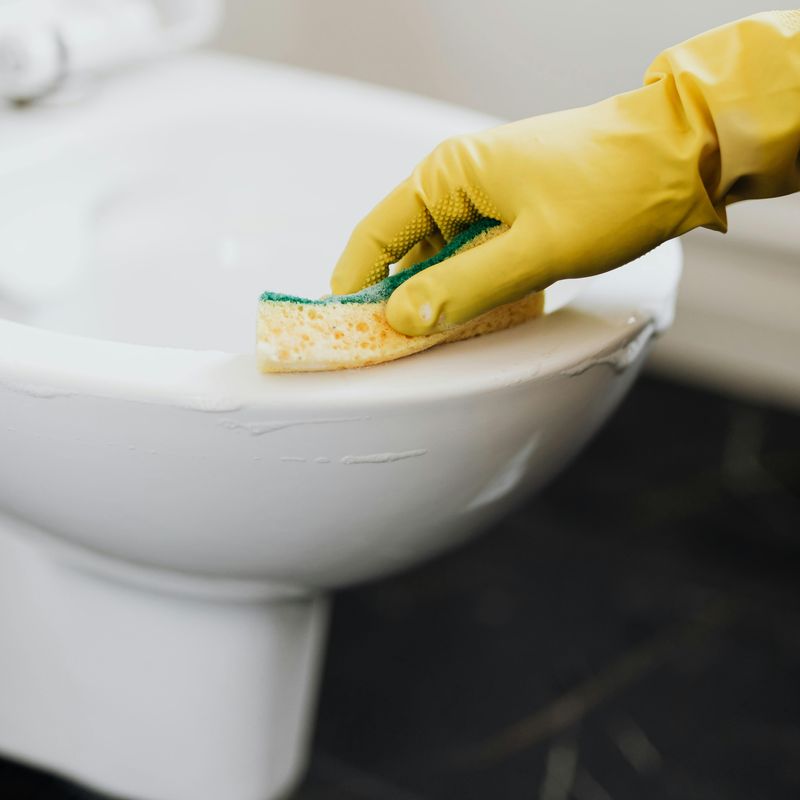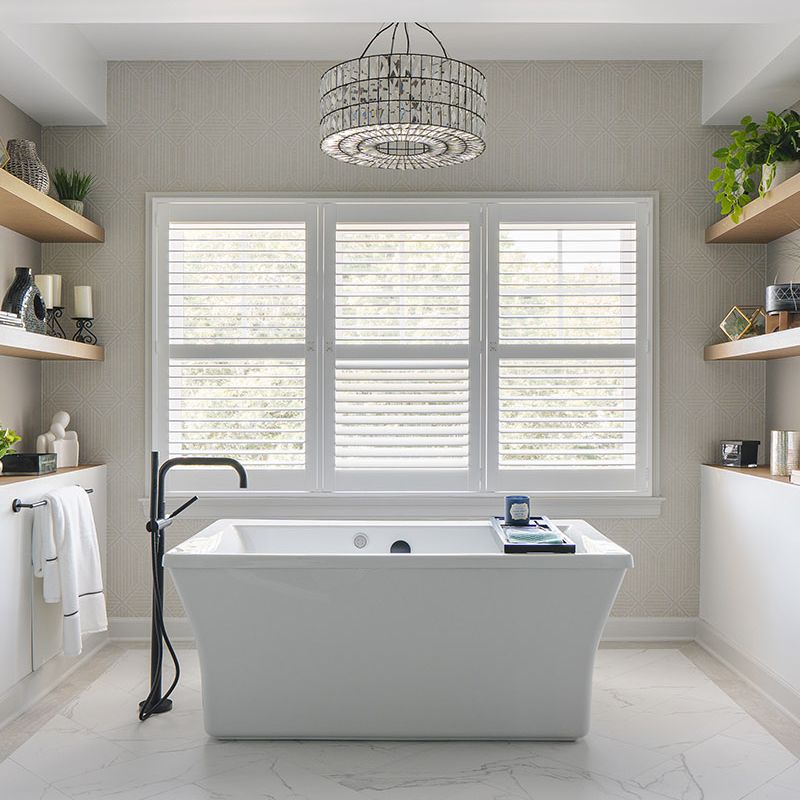 English
English
Jabra Sanitary is a sanitaryware supplier offering toilets, sinks, faucets, bathtubs, etc., at competitive prices. If you're a distributor, wholesaler, or project contractor, get a quote today!
 $23.9 Limited-time Offer
$23.9 Limited-time Offer Consignment Policy
Consignment Policy 20 Years of Experience
20 Years of Experience
Installing a new sink is a great way to refresh your kitchen or bathroom. How much does it cost to install a sink? We will explore all the sink installation costs, from the price of the sink itself to additional charges you may encounter.
By breaking down these costs, we'll give you a comprehensive overview to help you plan your next sink installation project, whether you're DIY-ing or hiring a professional.
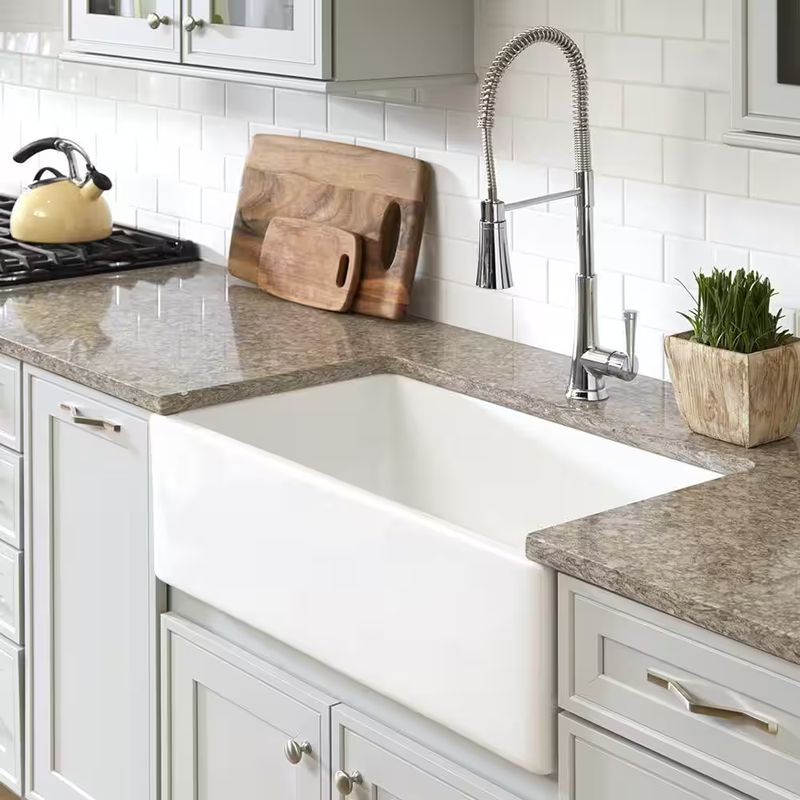
Table of Contents
Average Cost of Sink Installation
Sink Installation Costs Breakdown
How Much Does it Cost to Install a Sink by Style?
How Much Does a Sink Cost by Material?
DIY vs. Professional Sink Installation: Cost Comparison
Cost-Saving Tips for Sink Installation
Signs It Might Be Time to Replace Your Sink
FAQs
Final Thoughts
Average Cost of Sink Installation
When planning a sink installation, you must know the average cost of sink installation you might encounter. The cost can vary significantly based on the type of installation, the complexity of the project, and the materials used. Here's a breakdown of the average costs to install a sink:
Basic Installation
A basic sink installation involves swapping out an old sink for a new one in the same location. This type of installation typically includes the following:
- Remove the old sink
- Installation of the new sink, faucet, and plumbing connections
- Standard materials for installation
Estimated cost range: $280 - $600
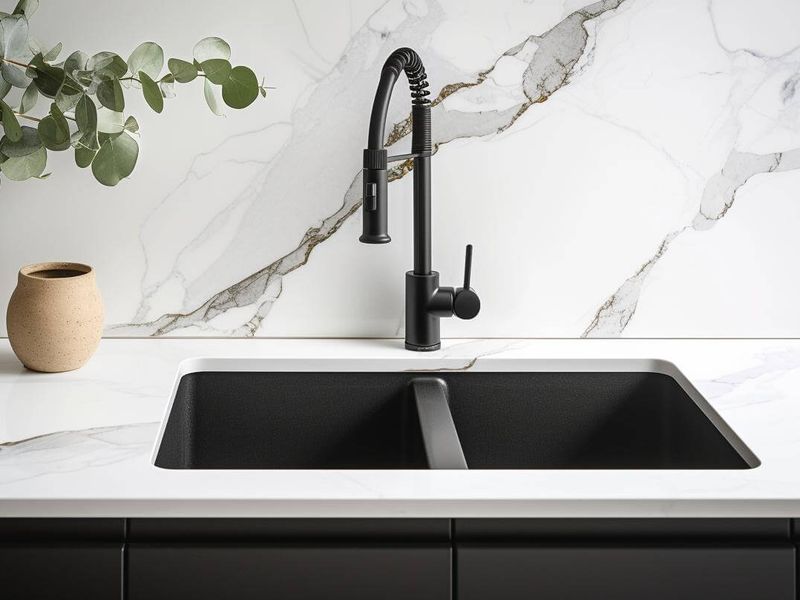
Mid-Range Installation
Mid-range installations usually involve slightly more complex tasks, such as upgrading to a more durable sink material or modifying some countertops. The work may also include installing additional fixtures like a faucet or soap dispenser.
Estimated cost range: $1,400 - $3,000
Note that for highly complex projects like farmhouse sink installations, costs may exceed this general high-end range due to extensive custom work.
High-End/Complex Installation
High-end installations are usually for custom sinks or large, heavy fixtures such as farmhouse sinks, undermount sinks, or specialized installations that require additional structural changes. This might include custom countertop modifications, high-end faucets, or extra plumbing work.
Estimated cost range: $1,400+
Sink Installation Costs Breakdown
When considering sink installation, several key components contribute to the overall cost to replace a sink. Below, we'll break down each of these elements so you can better prepare for the full cost of installation.
New Sink Cost (Kitchen Sink or Bathroom Sink)
The price of the sink itself is often one of the largest factors in your overall installation cost. The type of sink you choose—whether it's a basic bathroom sink or a high-end kitchen sink—will determine the price. Here's a quick overview:
- Basic sinks (porcelain, stainless steel): $100 - $300
- Mid-range sinks (quartz, granite): $300 - $800
- High-end sinks (copper, cast iron, custom designs): $800+
Faucet Installation
If you're installing a new faucet as well, expect an additional cost for both the faucet itself and the installation. Faucets can range in price depending on style and material:
- Basic faucets: $40 - $100
- Mid-range faucets: $100 - $300
- Luxury faucets: $300 - $600+
Installation fees typically range from $100 to $300, depending on the type and complexity.
Labor Costs
Labor is one of the significant parts of the installation process. Depending on the complexity of the installation, labor costs can vary widely. Most professionals charge by the hour, with rates typically ranging from $85 to $230 per hour.
Estimated total labor cost: $200 - $500
This cost depends on the time required to complete the installation and any additional tasks (such as modifying countertops or plumbing).
Additional Costs
Several other factors can increase the overall cost of your sink installation. These include:
Cost Item |
Price Range |
|---|---|
Old Sink Removal |
$30 - $150 |
Plumbing Modifications |
$100 - $600 |
Accessories and Hardware |
$20 - $200 |
Installation Materials |
$50 - $100 |
Countertop or Cabinet Modifications |
$200 - $1,500 |
Unexpected Repairs |
$50 - $400 |
Design and Aesthetic Upgrades |
$200 - $500 |
Upgraded Fixtures: Soap dispensers |
$100 - $300 |
Upgraded Fixtures: Spray hoses |
$150 - $300 |
Upgraded Fixtures: Drain strainers |
$300 - $400 |
Garbage Disposal Installation |
$250 - $650 |
How Much Does it Cost to Install a Sink by Style?
The style of sink you choose will significantly affect the overall cost of sink installation. Different styles require different levels of labor, materials, and expertise to install. Below, we'll break down the typical costs for installing a variety of sink styles.
Undermount Sink Installation
Undermount sinks are mounted below the countertop. However, they require precise installation and may involve countertop modifications, which can increase the cost.
Estimated cost range: $500 - $1,500 (Including sink, faucet, labor, and possible countertop modification)
Drop-in Sink Installation
Drop-in sinks are the most common and easy-to-install option. They simply drop into a hole cut into the countertop, making installation quick and affordable.
Estimated cost range: $200 - $1,500 (Including sink, faucet, labor, and materials)
Note that high-end materials or complex styles may exceed this range.
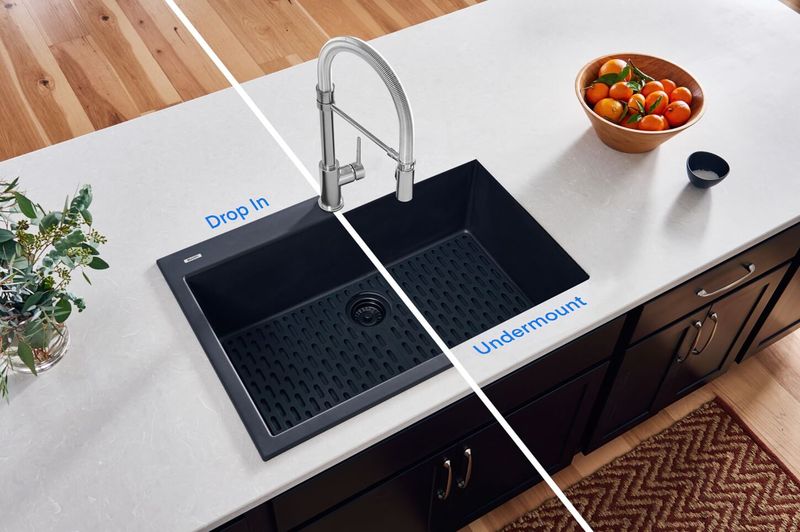
Farmhouse Sink Installation
Farmhouse sinks, also known as apron-front sinks, are large, deep sinks that protrude from the countertop. These require custom cabinet modifications and careful installation due to their size and weight.
Estimated cost range: $900 - $2,500 (Including sink, faucet, custom cabinet work, and labor)
Bar Sink Installation
Bar sinks are smaller and typically installed in home bars or small kitchens. Since they are compact, they are less expensive to install but still require professional installation for optimal function.
Estimated cost range: $200 - $500 (Including sink, faucet, labor, and materials)
Vessel Sink Installation
Vessel sinks sit on top of the countertop like a bowl. They require a different installation method, including appropriate plumbing and ensuring the sink is securely mounted.
Estimated cost range: $300 - $1,000 (Including sink, faucet, and installation)
Vanity Top With Sink Installation
This style integrates the sink into a vanity top, often found in bathrooms. This installation involves both the sink and the vanity, which may increase costs due to the complexity of the work.
Estimated cost range: $500 - $1,500 (Including the sink, vanity, faucet, and labor)
Wall-mounted Sink Installation
Wall-mounted sinks are great for saving space and are typically used in smaller bathrooms or utility rooms. These require strong wall support and proper installation for safety.
Estimated cost range: $300 - $800 (Including sink, faucet, and labor)
Corner Sink Installation
Corner sinks are designed to fit into the corner of a room, making them a great option for small bathrooms. Installation can be slightly more complicated due to the need to modify the space accordingly.
Estimated cost range: $300 - $800 (Including sink, faucet, and labor)
Pedestal Sink Installation
Pedestal sinks are elegant and typically used in smaller bathrooms. They're easy to install but may require special plumbing adjustments.
Estimated cost range: $250 - $600 (Including sink, faucet, and labor)
Utility Sink Installation
Utility sinks are practical for laundry rooms or garages. They are larger, more durable, and may require specialized plumbing.
Estimated cost range: $400 - $900 (Including sink, faucet, and labor)
Console Sink Installation
Console sinks combine functionality with style. They are mounted on legs, offering a more traditional look with a modern twist. Installation is more complex because it requires strong wall and floor support.
Estimated cost range: $500 - $1,200 (Including sink, faucet, and labor)
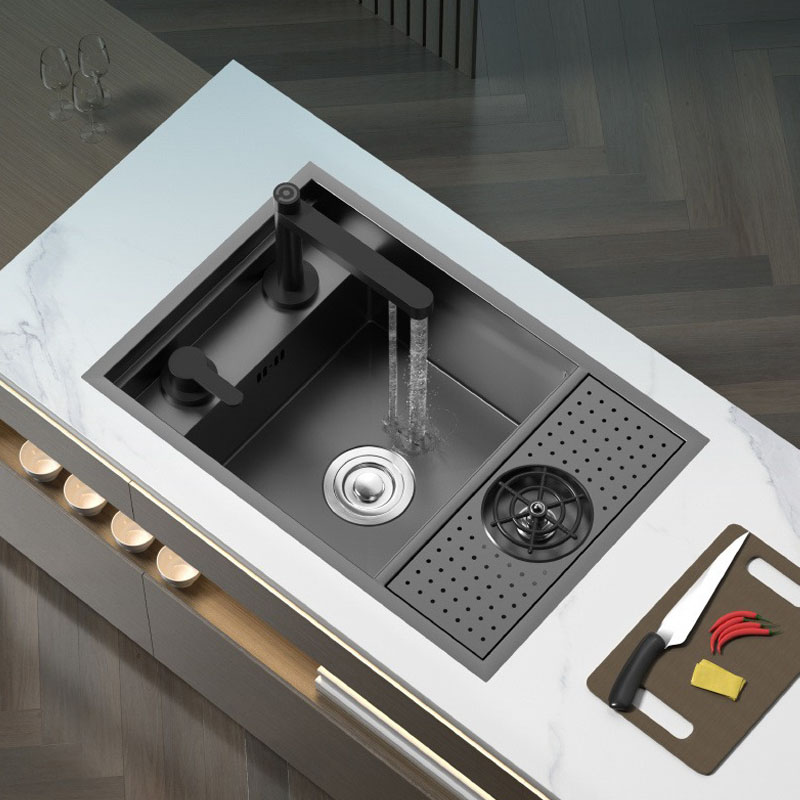 Ads
Ads
Undermount Double Bowl Workstation Sink
Here is the Undermount Double Bowl Workstation Sink H01, a versatile and functional addition to your kitchen. This double bowl workstation sink features a unique lifting faucet with dual hot and cold water outlets, easily adjustable to meet your needs without obstructing your workspace.
How Much Does a Sink Cost by Material?
The material of the sink plays a crucial role in determining both the cost and the durability of the installation. Different materials come with different price points, and some may require additional care or specialized installation methods.
Here's a breakdown of popular sink materials and their typical costs, including installation:
Sink Type |
Description |
Estimated Cost Range (Including Installation) |
|---|---|---|
Porcelain Sink |
Porcelain sinks are smooth, easy to clean, and come in various styles, including drop-in and undermount. They are budget-friendly and ideal for bathrooms or kitchens with standard usage. |
$200 - $600 |
Quartz Sink |
Quartz sinks are highly durable, resistant to stains, and come in various colors and textures. They are perfect for modern kitchens and stylish homes. |
$500 - $1,500 |
Granite Sink |
Granite sinks provide a natural, luxurious look with incredible durability. They are resistant to scratches and stains but are heavier, which increases installation costs. |
$800 - $2,500 |
Copper Sink |
Copper sinks offer a rustic aesthetic, resist bacterial growth, and require maintenance to prevent tarnishing. They are often used in luxury or farmhouse-style kitchens and bathrooms. |
$900 - $2,500 |
Stainless Steel Sink |
Stainless steel sinks are versatile, durable, and easy to maintain. They are a popular choice for both kitchens and bathrooms and are available in a variety of finishes. |
$200 - $1,200 |
Composite Sink |
Composite sinks are made from a blend of materials like quartz and acrylic, offering durability, color options, and resistance to stains and scratches. They are low-maintenance and a good middle-ground option. |
$300 - $1,500 |
Cast Iron Sink |
Cast iron sinks are durable and coated with enamel. They are known for their strength but may chip or crack if dropped. They require sturdy cabinetry for installation. |
$500 - $1,800 |
Glass Sink |
Glass sinks provide a modern, artistic touch, often used in bathroom vanities. They are fragile and may be prone to scratches or chips, requiring more careful installation and maintenance. |
$300 - $1,200 |
DIY vs. Professional Sink Installation: Cost Comparison
When it comes to installing a new sink, one of the first decisions you'll need to make is whether to tackle the project yourself (DIY) or hire a professional. Let's compare both options in terms of labor cost to install a kitchen sink:
Installation Type |
Costs Involved |
Estimated Cost |
|---|---|---|
DIY Sink Installation |
· Sink cost (varies by material and style) · Tools (wrenches, pipe sealant, silicone caulk, etc.) · Plumbing supplies (pipes, connectors, faucet installations) · Time and effort |
$200 - $700 |
Professional Sink Installation |
· Labor costs (plumbers charge hourly rates) · Sink installation (includes setup of sink, faucet, and plumbing) · Possible additional services (countertop modifications, plumbing adjustments, or removal of old sink) |
$400 - $1,500 |
Cost-Saving Tips for Sink Installation
While sink installation can be an investment, there are several strategies you can use to save money without compromising on quality. Here are some helpful tips to keep your sink installation cost-effective:
1. Works With Your Existing Space
One of the easiest ways to save money on sink installation is by working with your existing space. If you're replacing an old sink, avoid making significant changes to the plumbing or countertop. Keeping the same layout will reduce the need for additional modifications, saving you both time and money.
2. Reuse Your Existing Faucet
If your current faucet is still in good condition, consider reusing it for your new sink installation. This simple choice can save you anywhere from $50 to $300, depending on the quality of the faucet. Just ensure that your new sink is compatible with the existing faucet and plumbing setup.
3. Choose a Budget-Friendly Basic Sink
If you're looking to keep costs low, opt for a basic sink made from materials like porcelain or stainless steel. These materials are affordable, durable, and easy to maintain, making them a great choice for budget-conscious homeowners. Premium materials like granite or copper will add significantly to the overall cost.
4. Refinish Instead of Replacing
If your sink shows signs of wear and tear but is otherwise in good shape, refinishing it may be a cost-effective alternative to replacement. Professional refinishing services can restore the sink's surface, saving you the expense of a new sink and installation.
5. Do Some DIY Labor
If you're comfortable with basic home improvement tasks, consider handling some of the work yourself to save on labor costs.
For example, you can remove the old sink and prepare the area for installation. Just be cautious—if you're not confident in your plumbing skills, it's best to leave the more complicated tasks to a professional.
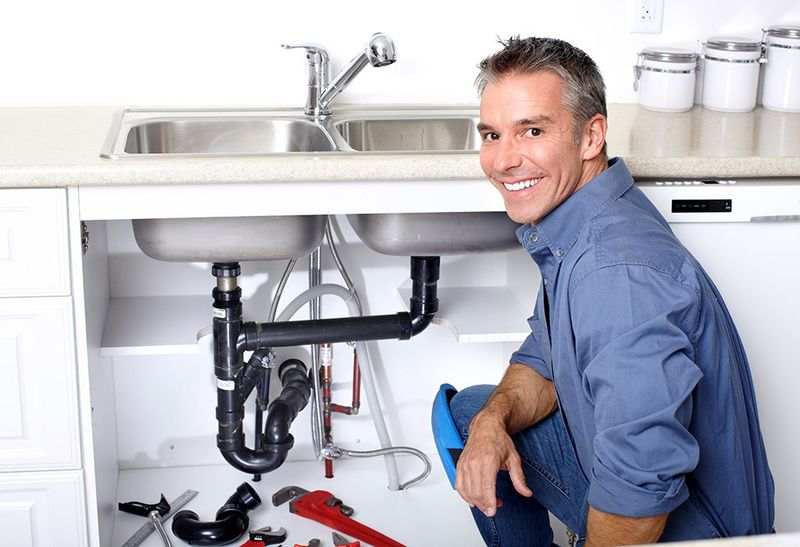
6. Get Multiple Quotes and Compare Prices
When hiring a professional, it's always a good idea to get multiple quotes to compare prices. Different contractors may offer varying rates.
By shopping around, you can find the best deal. Be sure to ask about any additional fees or hidden charges, such as disposal fees for the old sink or extra charges for plumbing modifications.
Signs It Might Be Time to Replace Your Sink
Knowing when to replace your sink can save you money in the long run and prevent further damage to your kitchen or bathroom. Sometimes, repairing or refinishing an old sink can extend its life. But other times, a replacement is the best option. Here are some signs that it might be time to invest in a new sink:
1. Your Sink Has Rust, Stains, and Damage
Over time, sinks can develop rust spots, stains, or cracks, particularly in older models or those made of materials like steel or porcelain. While minor stains or surface rust might be treatable, significant damage can compromise your sink's functionality and aesthetic appeal.
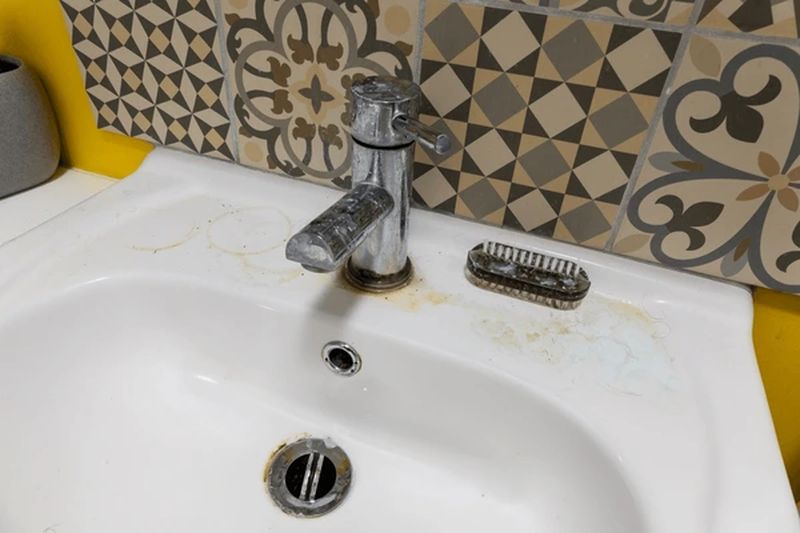
2. Your Sink Frequently Needs Repairs
If you're frequently repairing your sink—whether it's dealing with leaks, clogging, or worn-out faucets—this can indicate that your sink is nearing the end of its functional lifespan. Constant repairs not only add up financially but can also be frustrating and time-consuming.
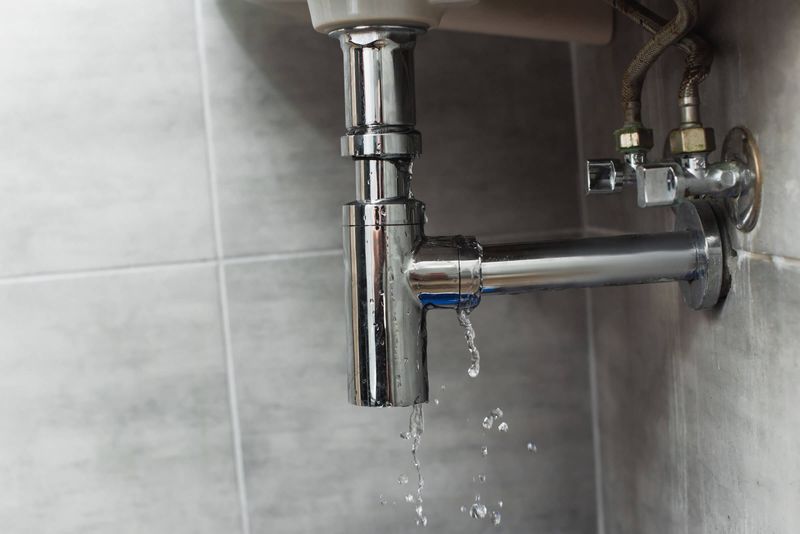
3. Your Preferences or Lifestyle Have Changed
Sometimes, the need to replace a sink isn't about damage—it's about changes in your preferences or lifestyle. For instance, you may decide you want a more modern sink, or perhaps your family's needs have changed, requiring a larger or more functional sink.
FAQs
When it comes to sink installation, you might have a few questions that need answering before you begin. Here are some frequently asked questions that can help clarify common concerns:
1. Do plumbers install faucets?
Yes, plumbers typically install faucets as part of the sink installation process. Since faucets require proper plumbing connections, hiring a plumber ensures that the installation is done correctly to avoid leaks and other issues.
2. How often should sink pipes be replaced?
On average, sink pipes can last 20-50 years, depending on the material. However, if you're experiencing frequent clogs, rust, or leaks, it might be time to replace the pipes.
If you're installing a new sink, it's a good time to check the condition of your plumbing and replace any old or damaged pipes.
3. How long does kitchen sink installation take?
The time required for kitchen sink installation can vary depending on the complexity of the project. A basic sink replacement might take around 2-4 hours.
More complicated installations, such as adding a new faucet or modifying countertops, could take 6 hours or more. If plumbing adjustments or structural changes are needed, the job may take longer.
4. Is it possible to change a sink without changing the countertop?
Yes, in many cases, you can change the sink without replacing the countertop. However, this depends on the type of sink and how it's installed. Drop-in and top-mount sinks are generally easier to replace without affecting the countertop.
For undermount or farmhouse sinks, countertop modifications may be necessary to accommodate the new sink.
5. Can you install a farmhouse sink without removing the countertop?
It's often challenging to install a farmhouse sink without removing the countertop, especially if the sink is significantly larger or requires custom fitting. Farmhouse sinks are typically designed to be installed beneath the countertop. So the counter may need to be modified or replaced to ensure a proper fit.
If you're not replacing the countertop, you might want to consult with a professional to see if your existing countertop can be adjusted.
Final Thoughts
Installing a new sink can significantly improve the look and functionality of your kitchen or bathroom. Whether you're opting for a simple, budget-friendly replacement or upgrading to a high-end custom sink, understanding the sink installation costs involved is crucial for making an informed decision.
If you're ready to move forward with your sink installation, be sure to get multiple quotes from professionals to find the best deal for your needs. You can get in touch with Jabra Sanitary to learn the cost of replacing a kitchen sink and the cost of installing sink plumbing.









